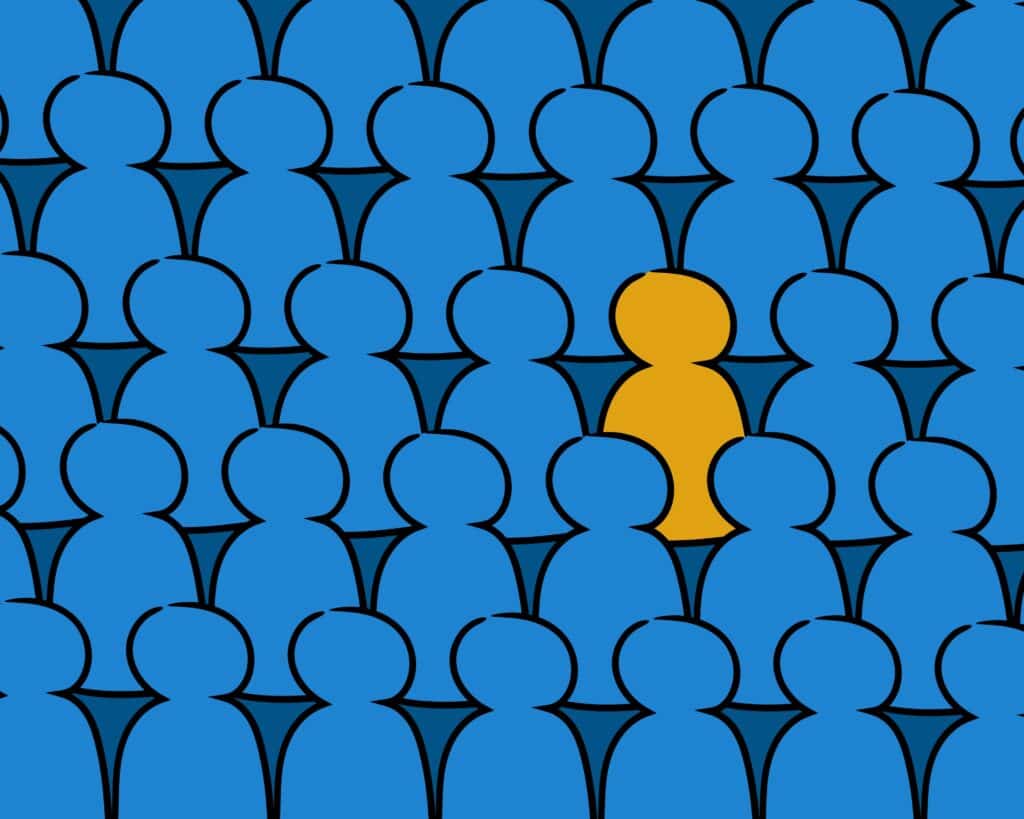hen Competition Turns Unhealthy

Mrs. Carter, a high school English teacher, noticed something troubling in her classroom. Her students weren’t just working hard; they were quietly turning against each other. Group projects turned into battles over who got the most credit. Friendly games turned into arguments, and students who didn’t come out “on top” started doubting their abilities. What Mrs. Carter saw was not healthy motivation—it was unhealthy competition.
Unhealthy competition in schools happens when students care more about beating their peers than about learning. Instead of building confidence, it can harm self-esteem and create stress. According to the American Psychological Association, nearly 45% of high school students report feeling stressed every day because of academic pressure and competition(American Psychological Association, 2019, source). When competition shifts from motivation to pressure, classrooms can become toxic learning spaces.
Signs of Unhealthy Competition in Classrooms
Teachers like Mrs. Carter can look out for early warning signs. Below is a table that outlines common signs of unhealthy competition:
| Signs in Students | What It Looks Like in Class |
|---|---|
| Fear of failure | Refusing to try unless they know they can win |
| Jealousy or resentment | Students celebrating when peers make mistakes |
| Declining collaboration | Group projects become tense, with less teamwork |
| Increased anxiety | Students show stress symptoms before tests or presentations |
| Focus on ranking instead of learning | Constantly asking about grades instead of feedback on improvement |
Research supports these classroom observations. A study published in the Journal of Educational Psychology found that students in overly competitive classrooms reported higher anxiety and lower motivation to learn compared to students in cooperative classrooms (Murayama & Elliot, 2012, source).
Unhealthy competition doesn’t just affect grades—it can damage classroom relationships and discourage struggling students from trying at all.
How Teachers Can Combat Unhealthy Competition

Mrs. Carter realized she couldn’t just tell her students to “be nicer.” She needed real strategies to lower the unhealthy competition in her classroom and replace it with motivation and teamwork. Research shows that when classrooms are structured around cooperation instead of competition, students perform better academically and report lower stress(Johnson & Johnson, 2009, source).
Below are proven ways to reduce unhealthy competition in schools and build healthier learning environments.
1. Shift the Focus from Grades to Growth
Students often feel trapped in a race to the top. To fight this, teachers can put more emphasis on progress and effort. For example:
- Instead of only showing test scores, highlight each student’s personal improvement.
- Use phrases like “You’ve improved your essay structure since last time” rather than “You got a higher grade than most of the class.”
- Encourage reflection journals where students track their own growth.
📊 A study from Stanford University found that students who focused on growth goals instead of competitive goals were 30% more likely to stay motivated after setbacks (Dweck, 2015, source).
2. Build Collaboration into Lessons

When students work together instead of against each other, unhealthy competition naturally decreases. Group learning lets students value teamwork over ranking.
Some ideas:
- Assign group projects where everyone has a clear role.
- Rotate group members so students learn to work with different peers.
- Grade partly on collaboration, not just final results.
| Method | How It Helps Reduce Competition |
|---|---|
| Group projects with shared goals | Students must succeed together, not individually |
| Peer teaching activities | Builds trust and reduces rivalry |
| Team-based quizzes or games | Turns competition into cooperation |
3. Redefine Rewards
Traditional rewards like “top student” or “highest score” increase pressure. Instead, rewards can focus on positive behaviors, teamwork, and effort.
- Celebrate milestones like “Most Improved Writer” or “Best Team Player.”
- Give class-wide rewards when everyone reaches a goal together.
- Encourage intrinsic rewards: praise effort, curiosity, and persistence.
According to a report in Frontiers in Psychology, students in classrooms that celebrated cooperation reported 23% higher levels of classroom satisfaction compared to those in competitive settings (Roseth, Johnson, & Johnson, 2008, source).
4. Teach Students About Healthy vs. Unhealthy Competition
Sometimes students don’t even realize the difference. Teachers can introduce the concept directly.
Ways to explain:
- Discuss scenarios: “What happens when competition helps you grow?” vs. “What happens when it makes you feel bad?”
- Use role-play to show how to encourage peers instead of tearing them down.
- Create posters or class rules about celebrating each other’s successes.
When students understand that competition can either lift or harm them, they learn to recognize unhealthy competition on their own.
5. Support Struggling Students

Unhealthy competition can be hardest on students who feel they’ll never “win.” Teachers can protect these students by:
- Offering extra support during office hours.
- Allowing alternative assessments (projects instead of only tests).
- Pairing them with supportive peers instead of rivals.
📊 The National Center for Education Statistics reports that students who feel supported by teachers are 3 times more likely to stay engaged in school (NCES, 2021, source).
6. Balance Classroom Activities
A mix of activities—individual, collaborative, and creative—ensures no one style of student always dominates. If every lesson is a competition, some students will constantly feel defeated.
- Rotate between quiet reflection, teamwork, and friendly challenges.
- Make sure every student has a chance to shine in different areas (art, science, speaking, writing).
- Introduce cooperative games where winning means achieving a group goal.
7. Use Open Communication
Teachers can invite honest feedback from students about classroom culture. Sometimes unhealthy competition is invisible to adults until students speak up.
- Use anonymous surveys to ask: “Do you feel stressed when competing with classmates?”
- Hold class discussions about fairness and teamwork.
- Let students suggest ways to make learning less stressful.
Research from Harvard Graduate School of Education shows that students who feel their voices are heard are twice as likely to report positive classroom experiences (Harvard GSE, 2018, source).
8. Involve Parents

Sometimes competition comes from outside the classroom. Parents may pressure students to always be the best. Teachers can reduce this by:
- Hosting parent nights to discuss the value of cooperation.
- Sharing student growth stories with parents, not just grades.
- Encouraging parents to praise effort and creativity at home.
9. Lead by Example
Students notice how teachers treat competition. If a teacher constantly praises only the “best,” students will mimic that. Instead:
- Share stories of your own mistakes and what you learned.
- Celebrate class-wide achievements (e.g., “Our whole class improved in reading scores!”).
- Stay calm when students argue over winning—model teamwork and fairness.
10. Create a Classroom Culture of Support

At the heart of reducing unhealthy competition is building a culture where learning is more important than winning. Teachers can:
- Post class mantras like “We rise by lifting others.”
- Start each week with a community-building activity.
- Encourage students to compliment each other after presentations.
When this culture is built consistently, unhealthy competition loses its power.
Introducing Healthy Competition and Building a Better Classroom
Mrs. Carter knew that if her students were going to change, she had to bring them into the process. Quietly changing lesson plans wouldn’t be enough—students needed to understand what was happening and why. She decided to hold a class discussion, starting with a simple question:
“How many of you feel nervous when you’re compared to others?”
Almost every hand went up. Some students admitted they worked harder because they didn’t want to “look dumb.” Others said they avoided volunteering answers because they were afraid of being wrong. This was the turning point where Mrs. Carter realized that students themselves could help fix the problem once they understood it.
How to Introduce the Topic to Students
Teachers can guide students to see the difference between healthy and unhealthy competition in a way that feels safe and encouraging.
- Start with stories: Share examples from sports, school, or even famous people where competition motivated growth—and where it turned harmful.
- Reflection journals: Ask students to write about a time competition helped them and a time it made them feel worse.
- Posters and visuals: Create a class-made chart that compares “Healthy Competition” and “Unhealthy Competition.”
- Class norms: Work together to set rules about how to treat each other when competing—like clapping for all presenters, not just the “best.”
| Healthy Competition | Unhealthy Competition |
|---|---|
| Motivates students to improve | Creates fear of failure |
| Encourages teamwork | Breaks trust between peers |
| Builds resilience | Increases anxiety |
| Focuses on growth | Focuses only on ranking |
| Celebrates effort | Shames mistakes |
By letting students name the differences, teachers turn the lesson into a shared responsibility instead of a top-down rule.
Helping Students Practice Healthy Competition

Simply talking about it isn’t enough—students need real chances to practice healthier forms of competition. Here are some approaches:
- Team-based challenges: Instead of “Who can finish first?” try “Which team can work together to find three solutions?”
- Rotating winners: Highlight different types of success (creativity, persistence, teamwork).
- Personal bests: Encourage students to compete against their own previous scores or efforts.
- Peer encouragement: Have students practice giving each other compliments after competitions or presentations.
📊 Research shows that classrooms with cooperative competitions (like team-based learning) see 27% higher student engagement compared to purely individual competition (Slavin, 2014, source).
Guiding Class Culture Step by Step
Mrs. Carter didn’t fix her classroom overnight. She introduced changes slowly:
- Week 1: Students wrote reflections about how competition made them feel.
- Week 2: They created a class chart of healthy vs. unhealthy competition.
- Week 3: Group games were introduced where “winning” depended on teamwork.
- Week 4: Rewards were given for collaboration and creativity.
By the end of the month, her classroom felt calmer. Students still wanted to do well, but they were cheering each other on instead of trying to pull each other down.
How Scholarly Sphere Can Support Teachers
Teachers don’t have to solve these challenges on their own. Platforms like Scholarly Sphere offer blogs, articles, and research-based guides that address classroom struggles such as unhealthy competition. By giving teachers access to strategies, real-life examples, and the latest educational research, Scholarly Sphere helps teachers feel supported while creating healthier learning environments.
Many teachers, like Mrs. Carter, find that having resources and communities outside of their own classrooms keeps them motivated. When teachers can turn to trusted tools, they’re better prepared to face the daily challenges of teaching.
Conclusion: Moving Beyond Unhealthy Competition

Unhealthy competition in schools doesn’t just harm grades—it damages confidence, relationships, and motivation. But teachers can take control by focusing on growth, encouraging teamwork, and directly involving students in shaping classroom culture.
Mrs. Carter’s story shows that one teacher’s efforts can transform an entire class. When students understand the difference between healthy and unhealthy competition, they don’t just learn better—they support each other more.
With support from platforms, strategies, and each other, teachers can move from classrooms filled with stress to classrooms filled with encouragement.
The question now is: what steps will you take to lower unhealthy competition in your classroom?
References
Slavin, R. E. (2014). Cooperative learning and academic achievement: Why does groupwork work? International Journal of Educational Research, 12(2), 165–179. https://www.jstor.org/stable/42920183
American Psychological Association. (2019). Stress in America™: Stress and current events. Retrieved from https://www.apa.org/news/press/releases/stress/2019/stress-america-2019.pdf
Murayama, K., & Elliot, A. J. (2012). The competition–performance relation: A meta-analytic review and test of the opposing processes model of competition and performance. Journal of Educational Psychology, 104(3), 1058–1077. https://doi.org/10.1037/a0025465
Johnson, D. W., & Johnson, R. T. (2009). An educational psychology success story: Social interdependence theory and cooperative learning. Educational Researcher, 38(5), 365–379. https://doi.org/10.3102/0034654308325693
Dweck, C. S. (2015). Carol Dweck revisits the “growth mindset.” Stanford Graduate School of Education. Retrieved from https://ed.stanford.edu/news/carol-dweck-revisits-growth-mindset
Roseth, C. J., Johnson, D. W., & Johnson, R. T. (2008). Promoting early adolescents’ achievement and peer relationships: The effects of cooperative, competitive, and individualistic goal structures. Frontiers in Psychology, 99(5), 298–310. https://doi.org/10.3389/fpsyg.2011.00232
National Center for Education Statistics. (2021). Student engagement in U.S. schools. Retrieved from https://nces.ed.gov/pubs2021/2021032.pdf
Harvard Graduate School of Education. (2018). Listening to learn: The importance of student voice. Retrieved from https://www.gse.harvard.edu/news/18/05/listening-learn

